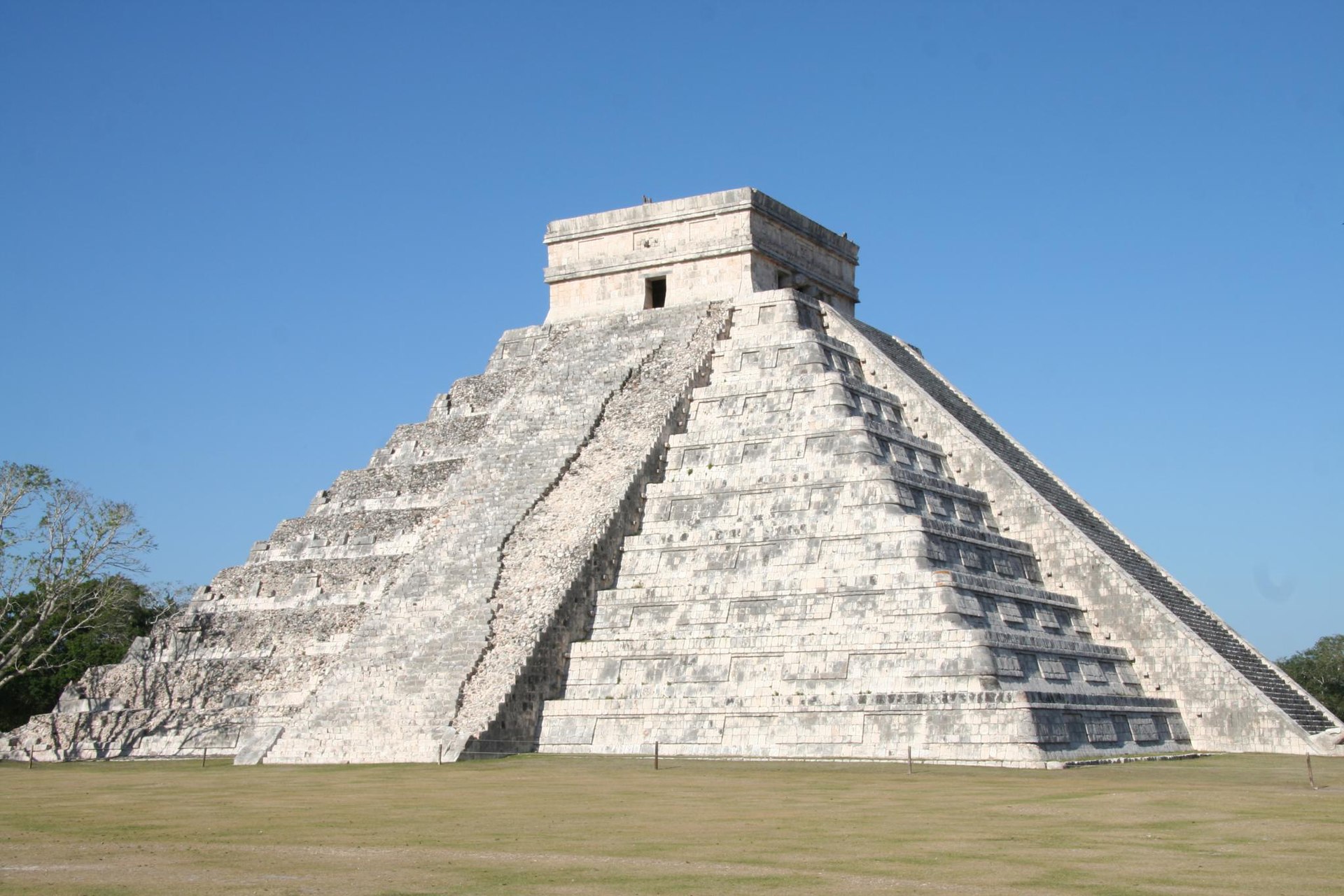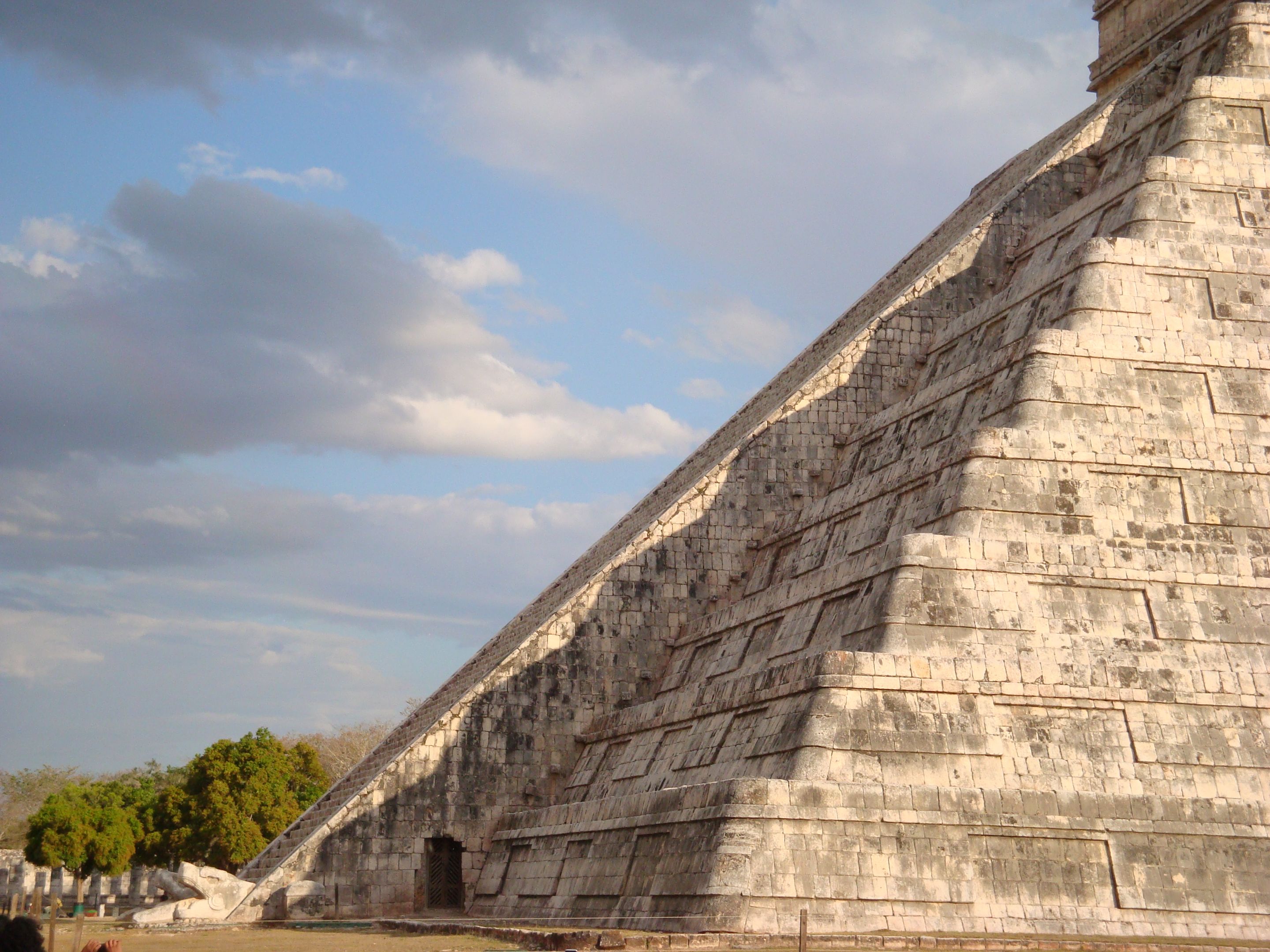The Chichén Itzá archaeological site in Mexico is dominated by El Castillo, the iconic step pyramid that was originally a temple to the feathered snake god Kukulcán.

For a time around the vernal and autumnal equinoxes, an image appears on the long staircase that rises up the side of the pyramid. The steps of the pyramid, with their rounded edges, cast a shadow on the staircase that – combined with the snake’s head statue at the bottom of stairs – gives the impression of Kukulcán descending down the temple, his mouth open, his body writhing.

Kukulcán is related to other feathered serpent deities in Mesoamerican religion, the most well-known of which is probably the Aztec Quetzalcoatl. He was the god that provided humans with their first maize, and so was of huge importance to the Mesoamerican peoples for whom maize was the staple crop.